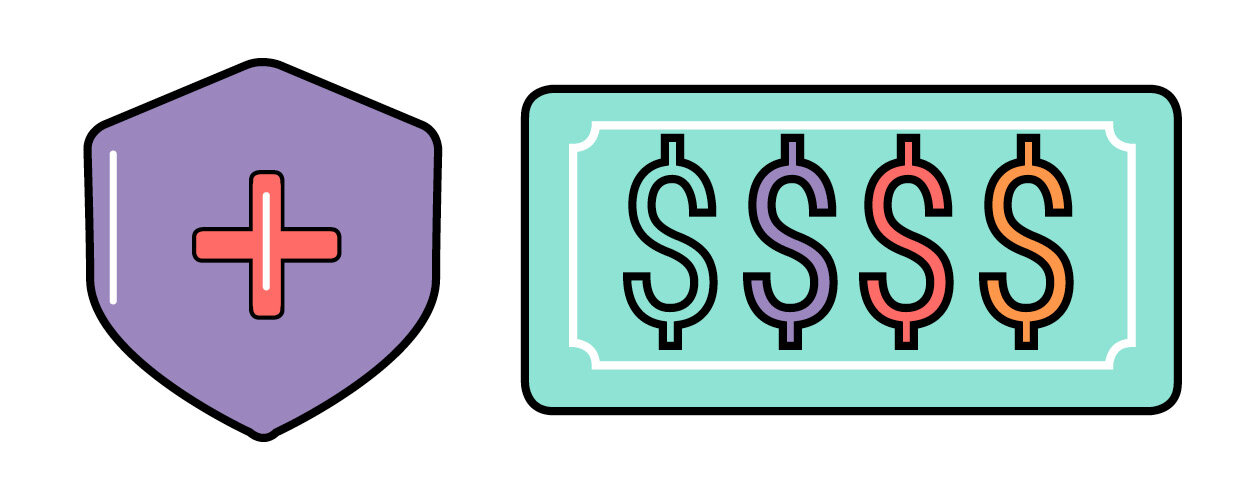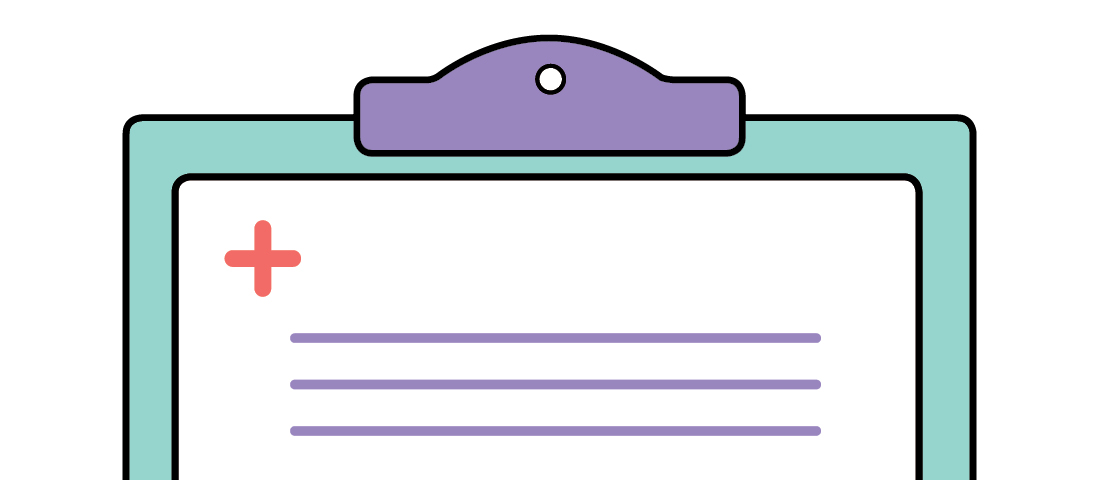PPO? HMO? HDHP? That Open Enrollment guide from HR might seem like alphabet soup, but Healthcare Hustlers don’t just blindly choose letters once a year. Our Hustlers know that choosing the appropriate healthcare plan can save or cost them thousands of dollars. We’ve outlined the most common options below.
Need to enroll, but don’t have employer sponsored health insurance? Check out this guide to health insurance without employer sponsorship.
Would you rather plug your plan information into a calculator to see which is best for you? Check out this open enrollment calculator.
Pros and Cons of a Standard PPO Plan
Pros of a Standard PPO Plan
Low deductibles: Most PPO plans have lower deductibles than HDHP plans. This means you may have to pay less out of pocket at the doctor, but you likely pay more in monthly premiums.
Predictable office visit & prescription copays: Many people like PPO plans because they have fixed copays to see the doctor or to buy a prescription. There is typically one copay for a primary care doctor and a higher copay for specialists. Some PPO plans even have a copay for emergency room care.
Cons of a Standard PPO Plan:
Highest premiums: Because most PPO plans have lower deductibles and predictable copays for office visits and prescriptions, the monthly premiums tend to be more expensive.
Summary of Standard PPO Plans
Standard PPO Plans May Be Best For: The most expensive PPO plans are typically best for medium healthcare utilizers, especially those who get frequent lab tests or office visits. Because medium healthcare utilizers often use services that are covered under copays, they will likely save money by choosing this plan because the copays are lower than the contracted rates someone on a high-deductible health plan would have to pay.
The most expensive PPO plan may also be a great choice for low risk takers, as your costs for many services are fixed and predictable, meaning less stress when using your healthcare benefits.
Pros and Cons of a Slightly Cheaper PPO Plan
Pros of Slightly Cheaper PPO Plan:
Medium deductible: Typically the cheapest PPO plan has a higher deductible than a more expensive PPO plan but a lower deductible than a HDHP (High Deductible Health Plan).
Predictable office visit & prescription copays: Just like other PPO plans, even a low costing PPO plan is likely to have copays for office visits and prescriptions.
Cons of Slightly Cheaper PPO Plan:
High premiums: Because there is less risk in PPO plans, your premiums are likely to be higher than what you would pay on a High Deductible Health Plan.
Best For: The lower cost PPO plans are best for Low to Medium healthcare utilizers, especially those who get frequent lab tests or office visits. They are also good for low risk takers, as you have fixed copays that make office visits more predictable.
Pros and Cons of an HMO Plan
Pros of an HMO Plan:
Medium premiums: HMO plans often cost less than PPO plans because they have smaller networks and a stronger internal referral structure.
Medium deductible: HMO plans typically have lower deductibles than HDHP plans.
Predictable office visit & prescription copays: Most HMO plans offer copays for doctor’s office visits and prescriptions.
Cons of an HMO Plan:
Smaller networks (limited choice of providers): HMO plans almost always have smaller networks than PPO or HDHP plans. You want to see an in-network doctor to take advantage of your in-network benefits, but with HMO plans your pool of in-network doctors may be small and limited to a specific geographic area. HMO plans also require a referral to see a specialist, so you may experience slight delays or challenges in provider access. Before considering an HMO plan, make sure you review the list of in-network providers to see if there are enough specialists near you.
Best For: HMO plans are great for Hustlers who rarely leave their geographic area, as they will not have to worry about finding an in-network doctor if they travel. They are also good for medium healthcare utilizers who are more cost conscious, or who want very well-coordinated care.
Tip: Make sure your provider is in-network before you sign up for this plan. You can check on the insurance website.
Pros and Cons of a High Deductible Health Plan (HDHP) (sometimes referred to as an HSA plan)
Pros of a High Deductible Health Plan:
Low premiums: High Deductible Health Plans usually have the lowest premiums of any plan. Rather than charging a high monthly premium, they simply put more out of pocket cost on the patient until the deductible is met.
Usually paired with a tax free Health Savings Account (HSA): HSA accounts are a fantastic savings tool for some people, as they have a triple tax benefit, roll over from year to year, and are a favorite of the FIRE crowd. Learn more about Health Savings Accounts (HSAs) here.
Note: You can also use your Health Savings Account to purchase a surprising variety of HSA/FSA-eligible products on Amazon!
Cons of A High Deductible Health Plan:
High deductible: High Deductible Health Plans are exactly what the name implies - they have high deductibles.
High cost sharing on all services: Most HDHP plans require the patient to pay all costs until the deductible is met, then the insurance company kicks in by paying co-insurance.
Unpredictable costs for office visits and prescription copays: Because you are responsible for paying the “contracted rate” until the deductible is met, you will likely not know the cost of most services until after you’ve been treated. For example, the cost of a specialist doctor visit can range from $50-$800 depending on the doctor, the contracted rate, and the reason for the visit. Learn more about contracted rates and how they work here.
HDHPs are Best for:
Extremely LOW healthcare utilizers, meaning you only use preventive care, 100% covered prescriptions (such as birth control) plus the occasional doctor visit. If you rarely use healthcare, there is no sense in paying high premiums for great benefits. You will usually come out ahead financially by paying less in premiums and you have little care to apply to your deductible.
Extremely HIGH healthcare utilizers, as you are likely to meet your out of pocket maximum, at which point you will no longer be responsible for costs as long as you stay in-network. Because the premiums are so low on HDHP plans compared to PPO plans, your total overall healthcare spend (cost of services + cost of premiums) will likely be lower on a HDHP vs a PPO plan with high premiums.
Hustlers with enough savings (in regular account or HSA) to cover their deductible in case of emergency.
Tips:
If you sign up for a high deductible health plan (HDHP), enroll in and contribute to the HSA account. This is a tax free investment account that rolls over year to year and follows you even if you leave your current employer. You will want this cushion even if you don’t expect to have any healthcare expenses, and if you don’t end up using it you can feel good about earning interest!
Read these articles before enrolling in a HDHP plan!
Have you already enrolled in a plan and need to find a provider? Check this out!

